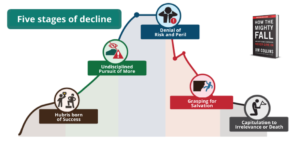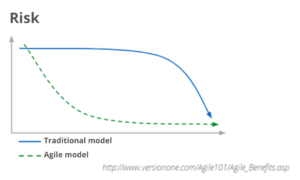This is a good time for us to discuss next year’s budget and plan for 2021. And that’s when the questions arise: “How will the market behave?”, “Will current consumption patterns persist?”
2020 was, undoubtedly, the year of Covid-19, and if there is one type of thing it didn’t lack was elements of uncertainty. This makes us wonder whether our companies are genuinely prepared to adapt to market flows when significant challenges surface, as was the case with Covid-19.
This blog post aims at helping your company to prepare for such unexpected challenges.
Background
Do you remember anything about your consumption patterns back in 2001? How about your habits? Would you be able to tell which ones you still keep until nowadays?
Let’s think about how we used to depend on taxis back then, in 2001. If we had a set time to be somewhere, we needed to book a cab in advance, remember?
Nowadays, I bet that, wherever you live, there are at least three different ride-sharing apps that offer additional features compared to conventional taxis and cost you less.
Covid-19, too, has been disrupting our society. However, it is undeniable that it hasn’t been the only disruption over the past 20 years, nor will it be the only one for the next five years.
Uncertainties and risks have been inherent to our reality since forever. We can safely state that we no longer respond to threats like we used to do 20 years ago.
The difference in timing between the risks faced in 2021 and 2001 is undeniably noticeable. Nowadays, it is quite likely that a foreseeable risk becomes concrete even before we have an action plan.
With that in mind, many companies are now under heavy discussions regarding their planning efforts for 2021. Endless brainstorming meetings took place virtually anywhere in order to define the projects and initiatives that will help corporations survive the next year.
Is it really time to plan for 2021?
Ok, the question does make sense. Amid so much uncertainty and risk, have we been having the right discussions?
I’m sure that the answer is “No.” And, before we move on, I’d like to highlight a concept that we use with executives whenever we discuss transformation strategies with them.
Let’s analyze the image below, taken from the book “How the Mighty Fall”, from Jim Collins:

Where do you think your company lies right now?
In 2018, Jorge Paulo Lemann noticed he was in stage 3 (“Denial of Risk and Peril”) and said the following at an event taking place in the US:
[…] I have been living in this comfortable world of old brands and large volumes. Nothing has changed much. You could just focus on being efficient and do well.
And, all of a sudden, disruption is everywhere.[…]
This given, Ambev and other companies led by him started to adapt to the market’s new needs.
What should your company’s concerns be?
Here, our goal is to pragmatically analyze what the company must focus on to avoid reaching the stage of “Grasping for Salvation.”
Therefore, we will be able to plan for 2021 to mitigate risks and become adaptable to possible changes in the market.
1) Achieve clarity on the business results you man to conquer
We are now talking directly with those who integrate the strategic leadership staff and positions: does your company know where it wants to be placed within the market? Based on metrics, do you know how close or how far you are? What is stopping you from getting there? Do you know that, too?
Without those answers, do not be fooled: all that brainstorming on projects for 2021 that your team is currently working on is nothing but a waste of time and money for your company.
It’s not that the ideas aren’t good. Maybe they are great! But where are they taking your company, really?
2) Encourage partial data
Having large projects that will only yield results at the end of the year is highly risky. Suppose everything is going well and, mid-year, the market takes a turn and needs change.
Then, there lies your company with a fantastic product at hand that absolutely no one needs. That should be a dictionary definition for “waste of money,” don’t you think?
Small but ongoing, continuous deliveries mitigate risks. The exercise of slicing value deliveries is a tough one, but it will enable your company to learn from mistakes and react to change within the market’s time frame.

Attention! It’s not about value deliveries that are invisible to the client. For example: in the first month, the database will be ready. In the second month, the backend will be delivered, the contract with the service renderer will be signed, the hiring plan will be kicked off, areas will be restructured…
At K21, we call that “delivering in layers.” Layers are essential elements that are unnoticeable to the client and are thus useless to prove efficient for mitigating market risks.
On the other hand, sliced deliveries are capable of decreasing the risk levels. This type of deliverable brings about noticeable changes for your client and have a clear impact on business outcomes.
When talking about business results, what I mean is increasing revenue and market share. In other words, we need to see metrics moving forward as expected.
3) Building a successful strategy
As Lemann put it, the scenario where being efficient will be enough does not exist anymore. This strategy simply won’t be able to keep a company afloat in current days.
There are three important points that may steer a new result-reaching strategy.
Run from commoditization
Commodities are:
“…products with uniform qualities or features, that are not differentiated based on who manufactured them or their origin. Their prices are, thus, determined in a uniform manner based on international demand and supply. If your product/service is just another one in the market and the criteria that your client uses to decide whether to buy from you or a competitor is price alone, you belong in the commodities world. What defines whether you find yourself in the commodities market is how your product/service is positioned.”
In order to position yourself outside of the commodities market, it is crucial to be close to your clients and understand their purchasing purposes. It is also important to keep in mind the client’s criteria for defining his purchases.
Technology is the way to go
Clients from five years ago are totally different from how clients are nowadays. It is a matter of difference in the target audience. Well, actually, the audience is the same, but habits have changed.
As a matter of fact, as I highlighted and even exemplified at the beginning of this post, habits change heavily, even over short periods. The main difference is how digital our world currently is. The digital and virtual arenas are gaining room by the second.
Technology became inherent to virtually all businesses’ survival and growth. For a company to be successful, more synergy is required between all business areas and technology.
Inspiring leadership and collective intelligence
Suppose the company needs a person to make decisions. In that case, I’m really sorry to tell you that your corporation is limited to the intelligence of one single human being, despite possibly counting on hundreds of highly qualified stakeholders.
Maybe this decision maker’s experience is indeed incomparable, but one must understand that delegating is vital for a company to grow.
While this person dedicates their full cognitive capacity to low-impact tactical decisions, market positioning and assessment of hurdles remain overlooked. Alternatively, they may be handled by a less competent person due to unfruitful delegation.
I hope that this post will help many executives to understand what their leverage points are in terms of performance and that the three suggested steps will drive great business results!
Are you aware of the fact that K21 is capable of helping you way beyond this blog post?
We are a relevant player in the training market, which results from our great performance as consultants. After all, formal knowledge aside, we live through all the pains that companies usually experience. That allows us to bring all that into our training programs, thus helping daily routines across over 100 companies.
Let us help you out hit the ground running in 2021! Together, we may overcome uncertainties and risks, support the C-level at the business strategy development, restructure areas, introduce efficient management models to your processes, and much more!
Would you like to understand how we could help you and your company a bit more in detail?
